In the early 1960s, in addition to taking on the challenge to land men on the Moon by the end of the decade, NASA also set its sights on exploring our planetary neighbors. The agency gave responsibility for planetary exploration to NASA’s Jet Propulsion Laboratory (JPL) in Pasadena, California. Turning attention first to Venus, JPL designed and built two Mariner spacecraft, based on their Ranger probes to the Moon, to explore the mysterious cloud-covered planet. Mariner 1 lifted off first on July 22, 1962, but when its rocket veered off course, the Range Safety Officer sent a destruct command to the vehicle. Engineers quickly identified and fixed the problems and Mariner 2 began its journey to Venus on Aug. 27, to conduct the first flyby of the cloud-shrouded planet on Dec. 14.
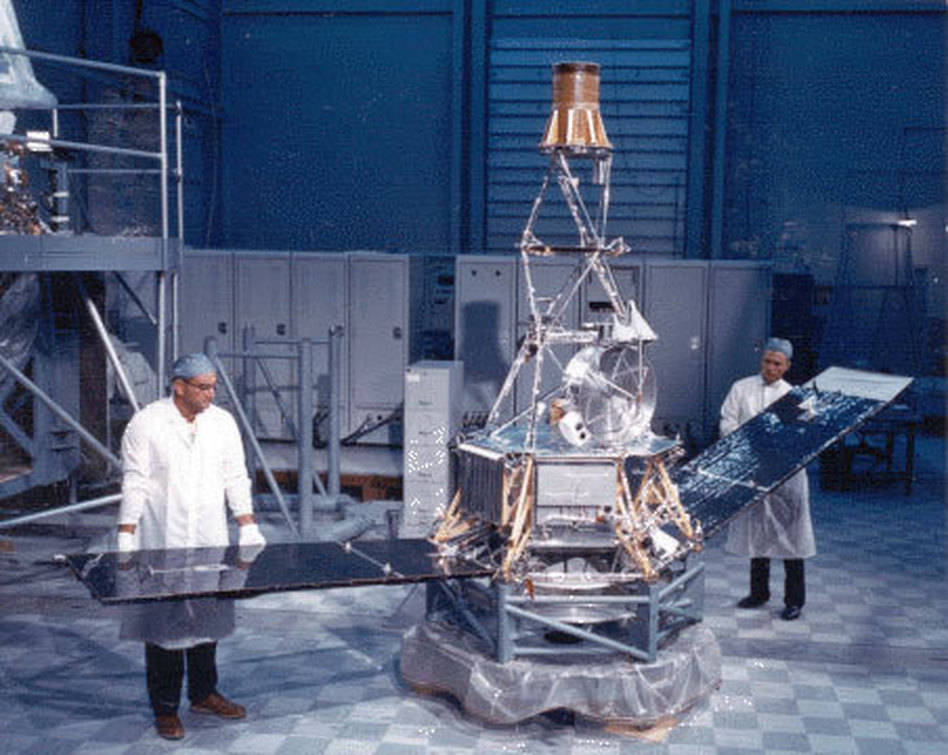
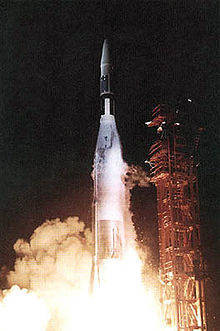
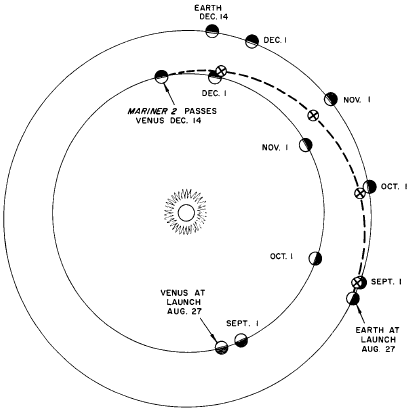
Left: Engineers prepare Mariner 2 for flight. Middle: Launch of Mariner 2.
Right: Schematic illustration of Mariner 2’s trajectory from Earth to Venus.
To take advantage of the 1962 launch window to Venus, JPL initially planned to send two 1,250-pound spacecraft, then called Mariner A, to explore Earth’s nearest planetary neighbor. Mariner A would use an upper stage called Centaur atop an Atlas booster that had sufficient thrust to send such a heavy vehicle on a path to Venus. In the summer of 1961, the Centaur ran into delays, and JPL engineers had less than a year to redesign the spacecraft to fit onto the smaller Atlas-Agena booster or risk missing the short launch window that occurs only every 19 months. The only practical solution involved taking a Ranger lunar spacecraft, also built by JPL, and modifying it to fly to Venus. At first, designers believed the smaller 447-pound spacecraft could only carry 25 pounds of scientific instruments, but ultimately it accommodated 46 pounds. Experiments for investigating Venus and interplanetary space included:
- A crystal microphone for measurement of the density of cosmic dust.
- A proton detector for counting low-energy protons in the solar wind.
- Two Geiger-Müller tubes and an ion chamber, for measuring high-energy charged particles in interplanetary space and in the Venusian equivalent of Earth’s Van Allen Belts (later shown not to exist).
- A special-purpose GM tube for measuring lower energy radiation, particularly near Venus.
- A three-axis fluxgate magnetometer for measuring the Sun’s and Venus’ magnetic fields.
- A microwave radiometer for measuring the temperature of the planet’s surface and its cloud tops.
- Two infrared optical sensors for parallel measurement of the temperature of Venus.
By late spring 1962, JPL engineers had built two flight-ready spacecraft and one spare, and shipped the flight units to the Cape Canaveral Air Force Station, now Cape Canaveral Space Force Station, in Florida, to prepare them for launch. The 56-day launch window extended from July 18 to Sep. 12.
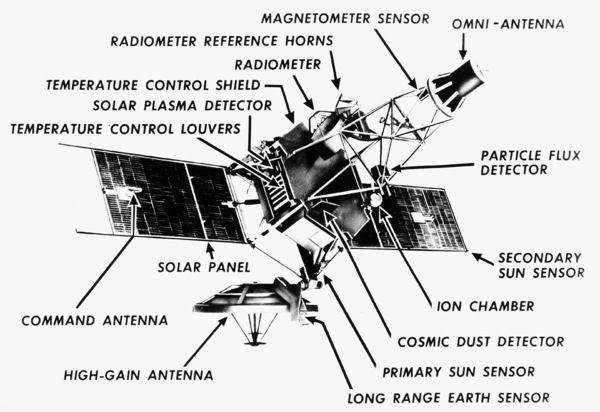
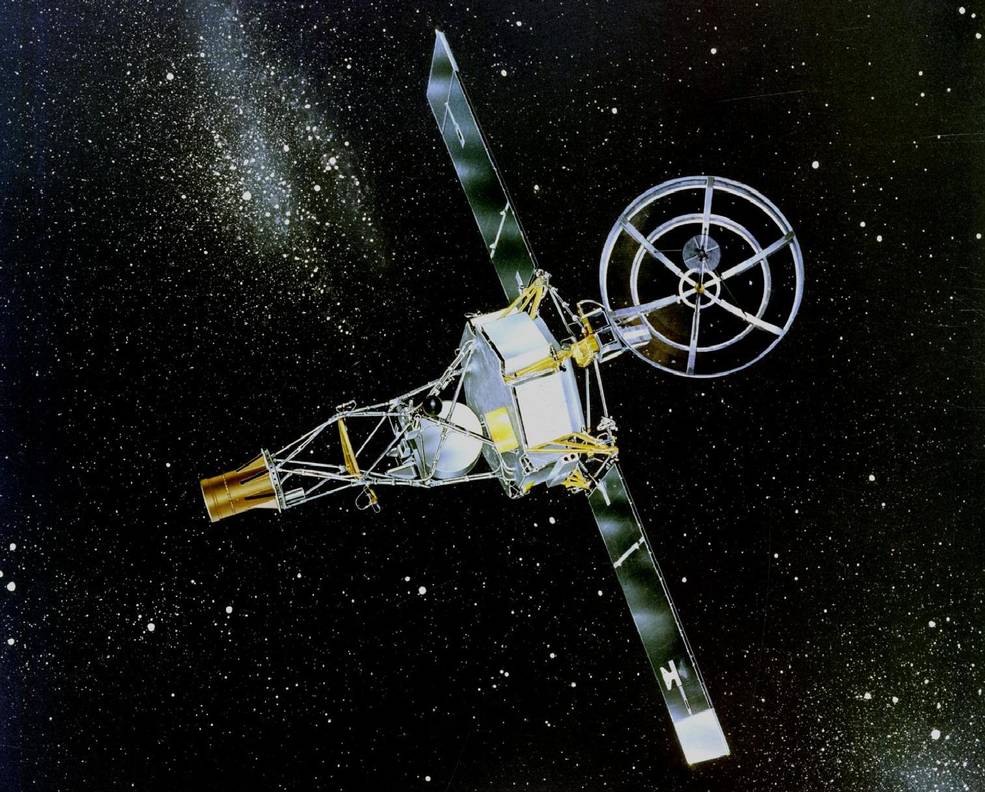
Left: Illustration of Mariner 2 showing its major components and
science instruments. Right: Illustration of Mariner 2 on its way to Venus.
Mariner 1 launched first on July 22, 1962, but its Atlas-Agena rocket veered off-course and the Range Safety Officer sent a command to destroy the vehicle to avoid it impacting a populated area. Engineers at JPL quickly identified and fixed the problem and Mariner 2 launched from Launch Pad 12 at Cape Canaveral on August 27. This time the launch succeeded, and the spacecraft entered solar orbit on its way to Venus. During the 110-day journey, Mariner 2’s instruments collected valuable information about interplanetary space including monitoring a major solar flare on Oct. 23, returning data at the then-fast rate of 8-1/3 bits per second, confirming the existence of the solar wind, a stream of charged particles emanating from the Sun. The spacecraft encountered several hardware anomalies during its journey, many of which inexplicably fixed themselves. The first problem occurred on Sept. 4, when 1.5 million miles from Earth the spacecraft fired its engine to correct its trajectory. The maneuver imparted an extra two miles per hour increase to the spacecraft’s velocity, meaning instead of flying by Venus at 9,000 miles, it would pass by the planet at more than 20,000 miles. Scientists hoped the extra distance would not significantly degrade the science investigations. By the time Mariner 2 approached Venus, one of its solar arrays had failed and the vehicle came dangerously close to overheating, but it remained healthy enough to complete the first fly-by of Venus on Dec. 14.
For more on Mariner 2, please visit https://www.jpl.nasa.gov/missions/mariner-2.
To be continued …
With special thanks to JPL Historian Erik Conway.



























